Pretty much every prepper understands the importance of fire when it comes to survival. Arguably fire was one of mankind’s earliest tools, and the one that provided us with the most benefits.
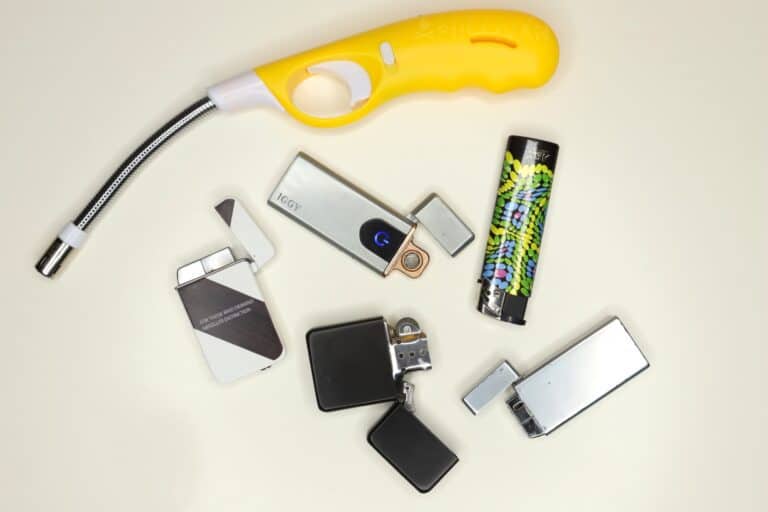
From keeping warm and providing light to cooking food and even defense, fire is as ever a valuable, if capricious, servant.
And so most preppers want the capability to create fire no matter the survival situation. Using a ferro rod and striker is fine, and nothing will replace primitive fire-making skills but when you need a fire right away nothing beats a lighter.
There are many kinds of lighter out there, each with pros and cons, and today I’ll be telling you about 10 of them and where they might fit into your survival planning.
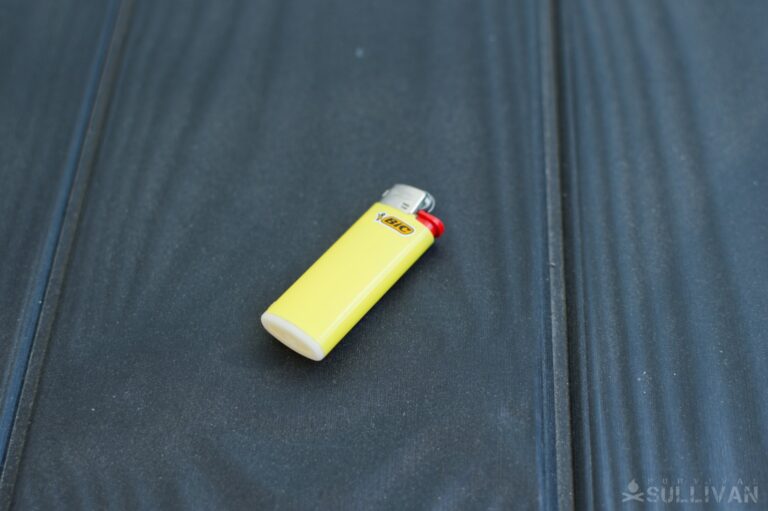
1. Plastic Sparkwheel Lighters
| Ignition | Sparkwheel |
| Fuel Type | Butane |
| # of Lights | 200-1,000 |
| Casing | Plastic |
| Windproof? | No |
| Waterproof? | No |
| Floats? | Some will. |
| Disposable? | Yes |
| Rechargeable? | N/A |
Pros:
- Basic lighter.
- Cheap, easy and affordable to pack multiples.
Cons:
- Does not have great weather resistance.
- Most not designed to be user fueled.
This is what most people imagine when they are thinking of a basic lighter like a Bic.
Made of plastic, as the name suggests, and utilizing a sparkwheel and flint arrangement for ignition, also as the name suggests, these are about as ubiquitous as lighters get…
These lighters are typically fueled with butane, though most of them aren’t designed to be user-refillable from the factory.
Providing a great combination of cost efficiency, reliability and user-friendliness, you can do a lot worse than tossing a few of these in your kit.
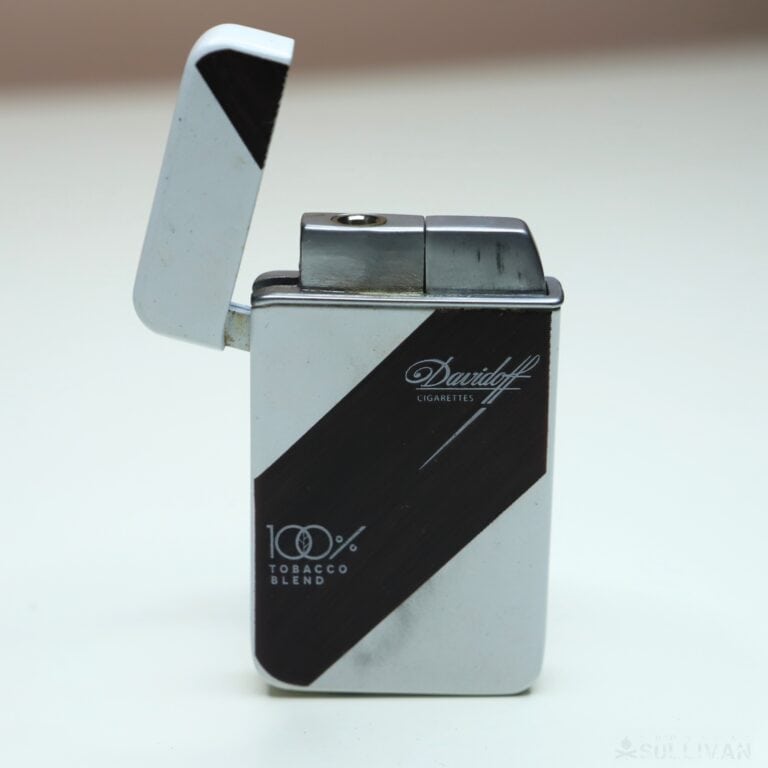
2. Butane Torch
| Ignition | Electric, Piezoelectric |
| Fuel Type | Butane |
| # of Lights | 100 to 500, average |
| Casing | Plastic, Metal |
| Windproof? | Yes |
| Waterproof? | Reasonably |
| Floats? | Some models will. |
| Disposable? | No. |
| Rechargeable? | Some electric models are. |
Pros:
- Intense, aimable flame.
- Capable of lighting most materials in all conditions.
- Windproof.
Cons:
- High fuel consumption.
- Good models are expensive.
- Might require fuel and electricity to function.
A butane torch lighter can be thought of as a miniaturized version of those kitchen torches or perhaps a lab burner that is used to keep a beaker bubbling.
Butane torches use a highly compressed butane fuel that is injected, along with air through a nozzle, and produces a brilliant blue, sharply pointed and intensely directed flame.
These lighters are extremely controllable and tremendously hot, capable of igniting materials that other lighters would struggle with.
This naturally makes them a good choice for trying to start a fire in inclement or windy conditions, and the easy “aimability” of the flame can help keep your fingers safe and also allow you to precisely target the most flammable tinder.
However, they do have some distinct drawbacks. These lighters tend to be gas hogs, and even though butane fuel is plentiful and cheap today, it might not always be so and they cannot use anything else as fuel if they run out.
Additionally, their ignition systems tend to be more fragile compared to other lighters because they’re more complicated.
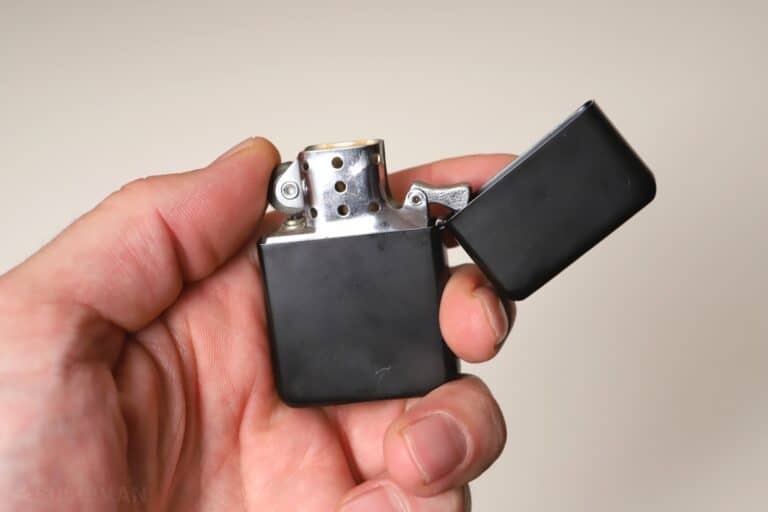
3. Zippo-Style Lighters
| Ignition | Sparkwheel |
| Fuel Type | Naphtha; can use other fuels in a pinch |
| # of Lights | Varies; usually holds enough fuel for 5 to 7 days of periodic lights. |
| Casing | Metal |
| Windproof? | Yes |
| Waterproof? | No |
| Floats? | No; may be fitted with flotation case |
| Disposable? | No. |
| Rechargeable? | N/A |
Pros:
- Easy to use.
- Repairable and adaptable.
- Can use alternate liquid fuels.
- Undeniably stylish.
Cons:
- Constantly loses fuel, even when closed.
- Won’t work if soaked.
There is hardly anything better than the classic Zippo when it comes to sheer style.
And whether you want the genuine article, an English Ronson, for any of the countless knockoffs made around the world, these lighters are portability and simplicity personified.
A Zippo, or any copy of a Zippo, is a little more than a fuel canister placed inside a carrying case with a hinged top that forms the body of the lighter.
Within the casing of the lighter, a wad of fuel-absorbent cloth acts as a reservoir, through which a wick protrudes up through a ventilated chimney with an adjacent spark wheel and flint.
Clicking open the hinged top allows air to get to the wick which is saturated with fuel drawn from the reservoir, and then striking the sparkwheel will easily create a large flame that’s surprisingly windproof because of the design of the lighter.
Zippo-type lighters are a study in contrasts: though they require more maintenance in the form of replaceable wicks and flints, these components are indeed replaceable, and the lighters themselves are very durable.
This makes a great choice for a DIYer, and even better they can make use of alternative fuels besides naphtha. Some people even use diesel in them!
The downside to Zippos is that they constantly evaporate fuel unless they are placed inside a larger and bulkier protective case that will seal them shut.
Unless you are religious about keeping your Zippo topped off, it might not be ready to go when you need it most, and even then it will only keep enough fuel on hand for about a week’s worth of very limited use.
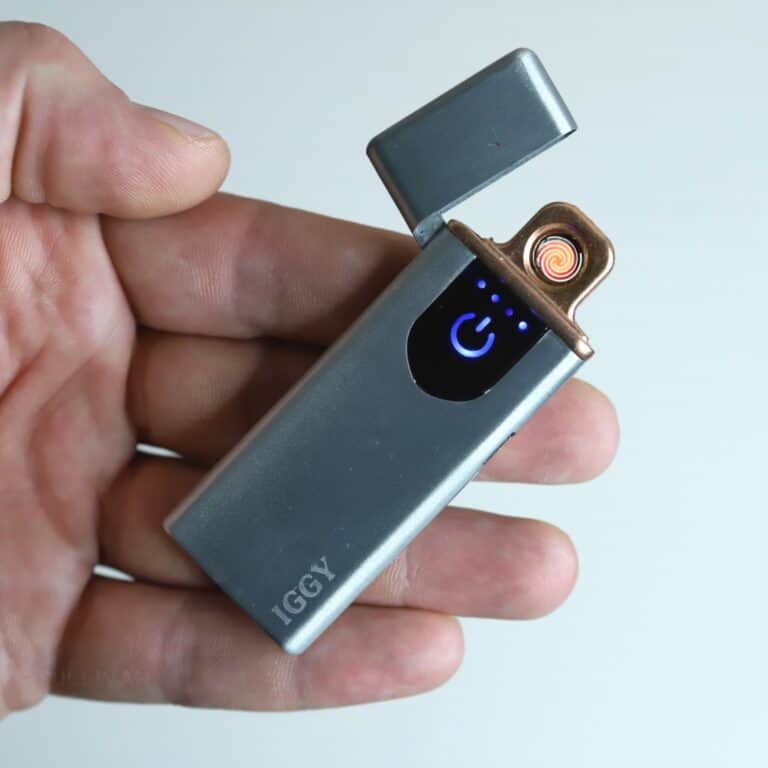
4. Electric Coil Lighter
| Ignition | Electric |
| Fuel Type | None |
| # of Lights | Varies with battery and filament size; usually limited. |
| Casing | Metal, plastic |
| Windproof? | Yes, but wind cools filament |
| Waterproof? | Maybe |
| Floats? | No |
| Disposable? | No |
| Rechargeable? | Yes |
Pros:
- Does not use fuel.
- Very compact and easy to carry.
- Safe to use.
Cons:
- Only good for lighting cigarettes.
- Requires near-constant recharging.
Electric coil lighters are basically portable versions of those push-down lighters that are installed in cars.
Activating them, either by pressing a switch or opening the protective cover, reveals an element through which electricity will flow, making it glow red hot.
Then pressing a cigarette to it will quickly and easily ignite it without any fuel.
Elegant and economical, they’re a great choice and also extremely safe because they do not contain any flammable fuel.
But for preppers, these lighters have many disadvantages namely the fact that they are completely dependent upon a rechargeable battery for ignition and the fact that even the best models don’t provide too many lights before they must be recharged.
Additionally, they will struggle to ignite anything but the lightest and fluffiest of flammable materials.
You aren’t going to press some dry sticks into one of these things and get them to ignite easily.
You would have to ignite fatwood shavings to ignite a tinder bundle, and then use the tinder bundle to get your twigs going to get your kindling going properly.
Overall, an interesting lighter for smokers, but one with very limited application in a survival scenario.
5. Plasma Lighters
| Ignition | Electric |
| Fuel Type | None |
| # of Lights | 100 to 200, depends on battery |
| Casing | Metal, plastic |
| Windproof? | Yes |
| Waterproof? | Some models are water resistant when closed; will malfunction if electrodes are wet. |
| Floats? | No |
| Disposable? | No |
| Rechargeable? | Yes |
Pros:
- No fuel needed.
- Intense plasma arc easily lights many materials.
- Windproof.
- Rarely affected by temperature extremes.
Cons:
- Require recharging.
- Limited number of lights on charge.
- Vulnerable to moisture on electrodes.
Plasma lighters are a unique type of electric lighter, one that functions by forming a high voltage arc of electrical energy, plasma, between two or more electrodes built into the head of the lighter.
These lighters have quite a bit to commend them when it comes to survival purposes: they’re absolutely windproof, durable and capable of igniting almost anything that can be touched to the arcing plasma.
The downsides are that they require frequent charging and gobble up energy, meaning they are best for short-duration situations.
But they require no liquid fuel to function which makes them safer for travel and also provides them with a degree of reliability in it very cold or very wet conditions, though the lighters themselves are rarely truly waterproof.
Also, buyer beware: this type of lighter is very popular, and there are many cheap models on the market that are hardly worth the price!
6. Permanent Match
| Ignition | Friction |
| Fuel Type | Naphtha; can use alternate fuels in a pinch |
| # of Lights | 100+ on single fuel load; sparker good for 10,000+ lights before replacement |
| Casing | Metal |
| Windproof? | No |
| Waterproof? | No |
| Floats? | Some models will when closed |
| Disposable? | No |
| Rechargeable? | N/A |
Pros:
- Simple construction.
- Can use multiple fuels when in a pinch.
- Easy to operate.
Cons:
- Basically a reusable match.
- Open fuel canister big spill, fire or explosion risk.
A permanent match is a unique type of “lighter,” if you could technically call it a lighter at all.
Consisting of a fuel tank and a removable striker or sparker stick that absorbs fuel while inside, in operation, the sparker is removed from the fuel tank before being swiped against any rough surface for ignition- just like a match.
The sparker will then burn for a time until the fuel is consumed.
They have become the darling of some survivalists and preppers because they seem to combine the advantages of a traditional match and a lighter.
The match itself in this case is not consumed upon lighting, but the match is also dependent upon a separate fuel source.
And while the sparker itself will last for a very long time before it needs replacement, usually many thousands of strikes, your fuel itself will be consumed a long time before then.
Some people love the simplicity and novelty of these lighters, but I prefer a more traditional lighter if I am carrying anything that uses liquid fuel.
Additionally, the risk of a fuel explosion is extremely high if you don’t remember to douse and cool the sparker before reinserting it into the tank!
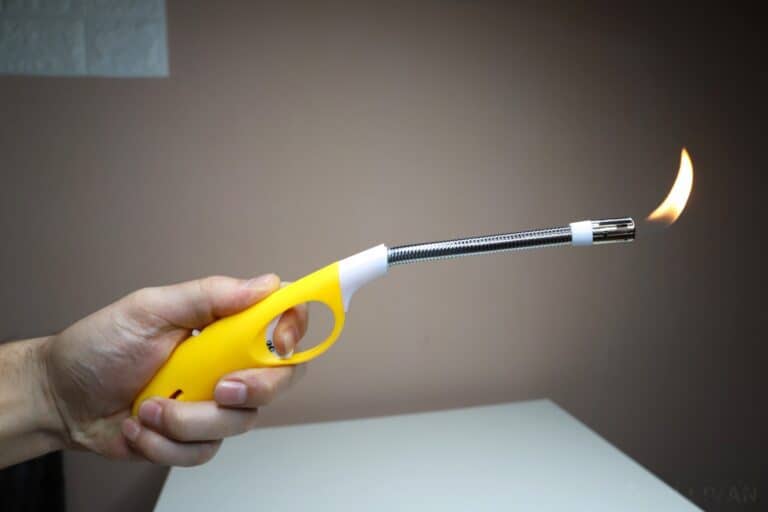
7. Candle Lighters
| Ignition | Piezoelectric |
| Fuel Type | Butane |
| # of Lights | 250-1,0000 |
| Casing | Plastic |
| Windproof? | No |
| Waterproof? | No |
| Floats? | Sometimes. |
| Disposable? | Yes; some models refuelable |
| Rechargeable? | N/A |
Pros:
- Easy to reach tough spots.
Cons:
- Basically a long neck piezoelectric lighter.
- Bulky and hard to carry.
Candle lighters are those long-necked lighters you see used for exactly what their name implies: lighting candles, grills, sconces, and other difficult-to-reach objects.
In operation, they work exactly like a typical butane lighter: they have a fuel reservoir, typically have an adjustable fuel supply, and use piezoelectric ignition.
The only difference is they have a long wand or neck that is designed to reach into nooks and crannies for lighting.
These are an entirely acceptable choice for a survival lighter, but one that does not really have a purpose.
They don’t carry significantly more fuel than a common pocket-sized lighter and their greater size and length simply makes them more difficult to pack and carry.
I can see them having a few specific advantages if you are working with a fire hole or in-ground rocket stove, but that’s about it.
8. Pipe Lighters
| Ignition | Varies |
| Fuel Type | Varies |
| # of Lights | Varies |
| Casing | Metal, plastic |
| Windproof? | Some models are. |
| Waterproof? | No |
| Floats? | No |
| Disposable? | Some models are. |
| Rechargeable? | Depends on model. |
Pros:
- Easy to light pipe without burning your fingers.
Cons:
- Does not bring anything else to the table in a survival situation.
- Has inherent weaknesses of parent lighter type.
Pipe lighters are for, as the name suggests, lighting pipes. I mean smokers’ pipes, in case you are unfamiliar.
Trying to light a pipe bowl full of tobacco with a typical lighter is pretty difficult because of its orientation, and can often lead to the user burning themselves.
Pipe lighters conveniently solve this problem by projecting the flame at a 90° angle out the side of the case, keeping the fingers operating the lighter clear of the flame and the updraft.
Other than this design eccentricity, pipe lighters are either of the Zippo-type with an open fuel reservoir or of the typical sparkwheel type akin to other disposable lighters.
Some even operate using a ring of butane jets like a torch lighter.
Accordingly, the advantages and disadvantages these lighters have will be mostly dependent upon their method of operation and fuel type, so refer to those entries for more insights.
In any case, I don’t think I would choose a pipe lighter as a dedicated survival lighter unless I was actually packing a pipe and tobacco as my comfort item!
Nonetheless, if you need to start a fire and a pipe lighter is what you have, it can definitely get one going.

9. Piezoelectric Ignition Lighters
| Ignition | Piezoelectric |
| Fuel Type | Butane |
| # of Lights | 200-1000 |
| Casing | Plastic |
| Windproof? | No |
| Waterproof? | No |
| Floats? | Some will |
| Disposable? | Yes; some models refuelable. |
| Rechargeable? | N/A |
Pros:
- Easy to use compared to sparkwheel lighter.
Cons:
- Ignition system more delicate than other lighters.
- Not user repairable.
Sometimes called piezo-spark lighters, these are typical butane fuel lighters, disposable or otherwise, that rely upon a clickable button instead of a typical sparkwheel and flint arrangement for ignition.
Pressing the button results in a striker impacting a quartz element. This, in turn, produces a sharp spike of brief but high-voltage electricity, electricity that’s capable of igniting a fuel stream.
For some folks, these are much easier to use than sparkwheel lighters because they need a little bit less coordination- just click the button and hold it!
But they do have some downsides, namely the fact that these lighters have a more fragile ignition system compared to a typical sparkwheel, and even if they are refillable these systems will not last as long as a comparable flint.
But overall, assuming they are a quality lighter and kept fueled, they’re an entirely acceptable choice for a general-purpose lighter in a survival situation.
10. Capsule Lighter
| Ignition | Sparkwheel |
| Fuel Type | Naphtha; can use other fuels |
| # of Lights | Varies with tank size |
| Casing | Metal |
| Windproof? | Some are |
| Waterproof? | No |
| Floats? | No |
| Disposable? | No |
| Rechargeable? | N/A |
Pros:
- Small, convenient to carry.
- Easy to repair.
- Can use alternate liquid fuels like Zippo.
- Less fuel evaporation.
Cons:
- Still has issues with fuel evaporation.
- Screw-on lid vulnerable to loss.
- No great weather resistance.
A capsule lighter is a tiny, two-piece lighter that is, somehow, like an even more primitive Zippo.
Basically, the top of the lighter unscrews as a separate part instead of being permanently attached on a hinge. Otherwise, they work exactly the same.
They do have one significant advantage over Zippos, though, and it is that they usually seal much more tightly which will slow or, sometimes, prevent the evaporation of fuel.
Combined with their adaptability, repairability and simplicity this can make them a pretty good survival lighter although one that is not ideally suited for the worst conditions.
Another good quirk of these lighters is that they are compact and unobtrusive enough to be attached securely to your backpack via lanyard or carried on a keychain so you are more likely to have it with you when you need it.
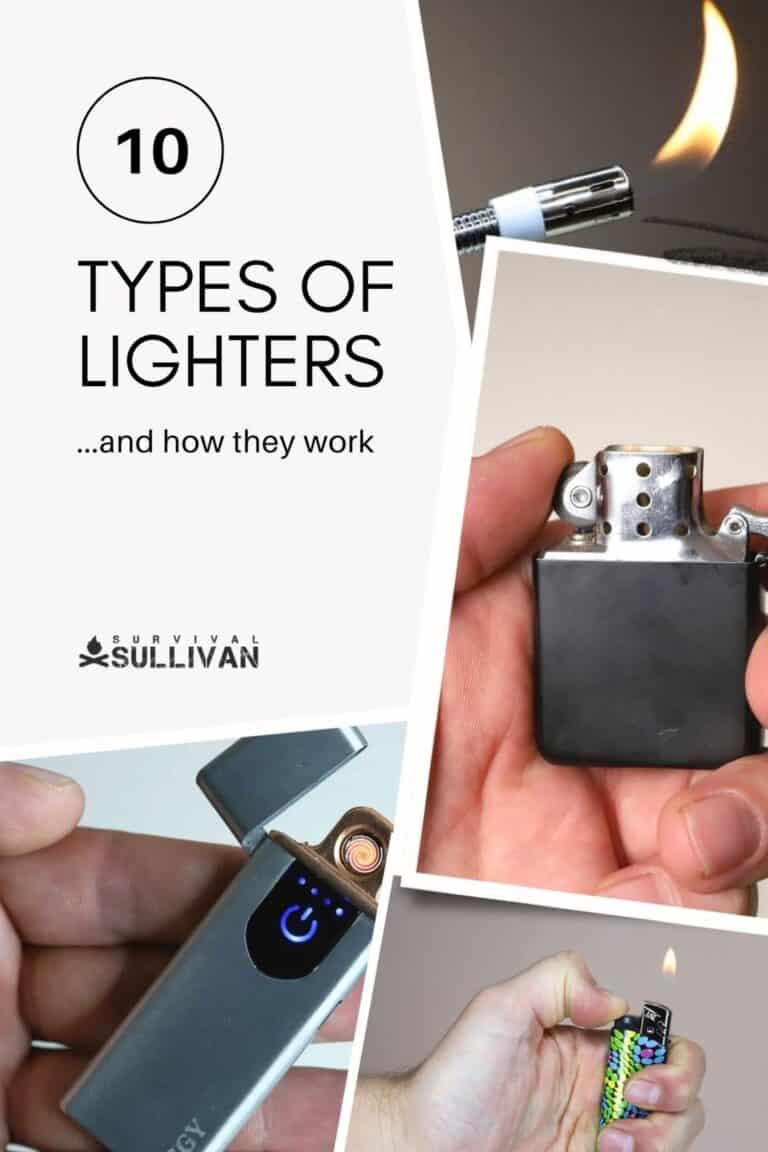

Tom Marlowe practically grew up with a gun in his hand, and has held all kinds of jobs in the gun industry: range safety, sales, instruction and consulting, Tom has the experience to help civilian shooters figure out what will work best for them.

What about the sailor’s lighter? It’s a piece of cotton rope with a striker unit slipped around it. I think the end needs to be initially charred. The sparking wheel creates an ember and there’s a cap to snuff it out.
I’m looking for a cig. lighter my dad had in the mid 1950s. It was round, about the size of a quarter, about two inches long, made of aluminum. The top was about one inch long and covered the second part of the “tube.” When you pulled the top off, there were two wires in the main part. Within two-three seconds they glowed and ignited the fuel vapor inside the tube. No flint, no electricity, just the exposure of the wires to air.
Who knows where I can read about them, and perhaps purchase one?